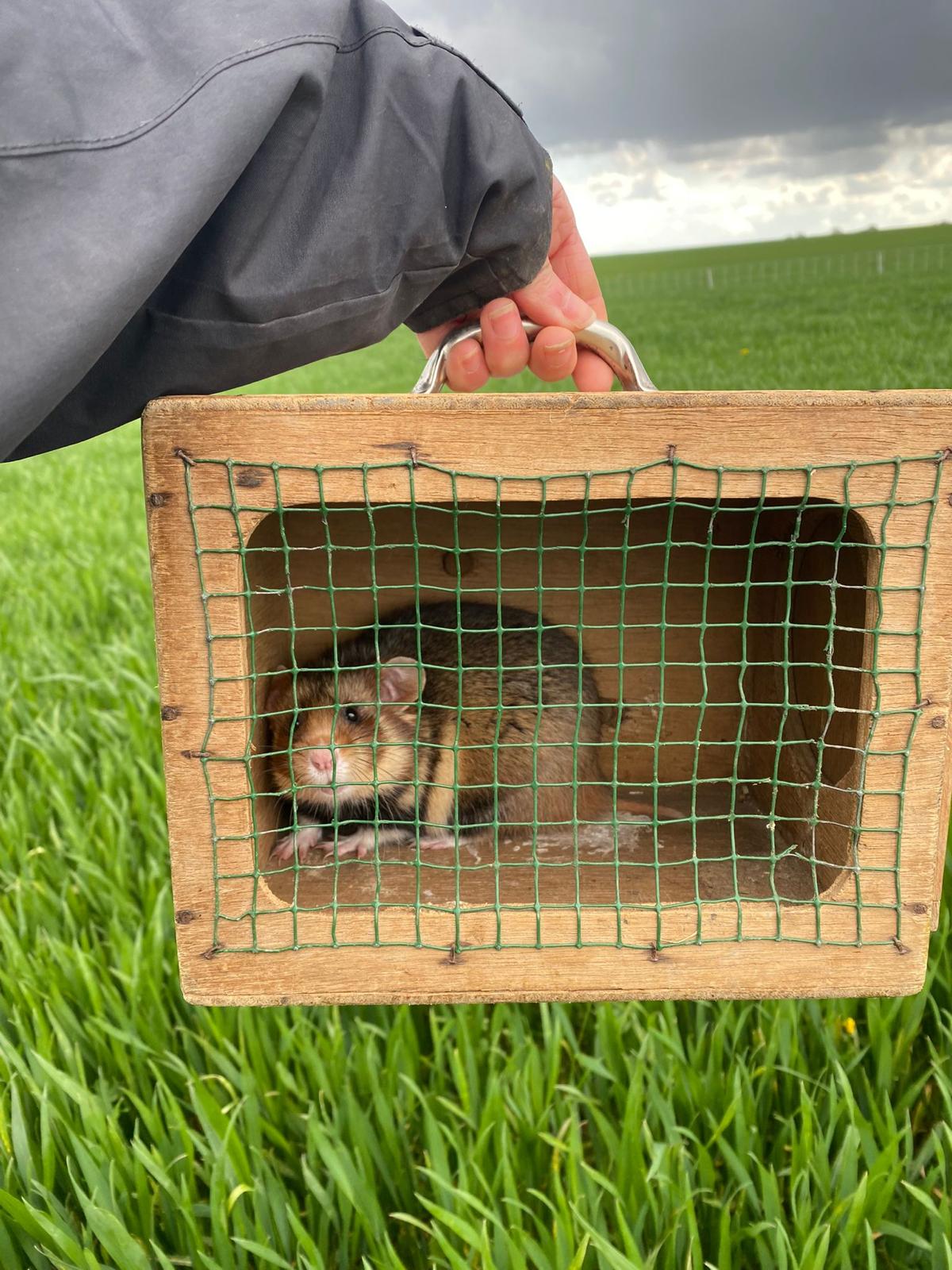Sharing knowledge to save a species
Estelle Morgan, one of our wildcat keepers, recently travelled to the Netherlands to visit another restoration project. Estelle worked with the animal team at Gaia Zoo’s conservation breeding for release project for the critically endangered European hamster (Cricetus cricetus). Sharing knowledge and experience with other experts around the world will help us better understand how to save the wildcat in Scotland.
“In April, I spent an incredible week with Gaia Zoo’s team of expert animal keepers and conservationists observing and working with the European hamster. Unlike pet hamsters, these fierce rodents are much larger, wild animals, who avoid people wherever possible.
Just like wildcats in Scotland, populations of the European hamster have declined dramatically, leaving them on the brink of extinction. These small mammals play a critical role in maintaining ecosystem health, but they are threatened by persecution, predation, agricultural intensification, habitat loss and fragmentation. Although their range spans across Eurasia, they were declared extinct in the Netherlands in 2002. That same year, a research and reintroduction project started. Without this intervention from conservation breeding facilities, hamsters would not be present in the country today. Their story is reminiscent of the plight of the wildcat in Scotland.
Gaia Zoo is the only facility breeding and releasing hamsters in the Netherlands. Being an animal keeper myself, I was keen to understand how the hamsters are cared for and the role the animal keepers have in the restoration of these small mammals to the wild. Their facility is home to over 100 European hamsters and similar to my role at Saving Wildcats, I was able to assist with the daily husbandry required to manage the breeding animals and their young, as well as prepare juvenile hamsters ahead of their release.
On my final day with the team, I was lucky enough to be invited to help release 38 hamsters. At the release site, the field team had pre-drilled burrows, one for each hamster, and provided supplementary food. The team had also installed electric fencing around the site, to reduce disturbance from dogs and other terrestrial predators. Once each hamster had been gently posted into their burrow, the opening was plugged up with vegetation giving them time to settle into their new environment. Preparing the release site ahead of the releases is very important, just as our field team have done, and will continue to do, for the wildcats.
Conservation breeding for release programmes are a vital tool for species recovery. My time at Gaia zoo has given me a deeper understanding of the commonalities between our projects, irrespective of which endangered species we’re working with. The similarities in our practices have also reaffirmed my confidence that Saving Wildcats’ evidence-based approach to conservation breeding is backed by experts internationally.
Without the continuous hard work from the staff at Gaia Zoo and other conservation breeding facilities across Europe, the hamsters would go extinct. Just like the wildcat would in Scotland. As I returned to the Saving Wildcats conservation breeding for release centre, based at Highland Wildlife Park, I realised that my experiences in the Netherlands have given me an increased admiration of the role that zoos play in conservation.
Wildcats and hamsters, although physically very different, share one important similarity, and that is their tenacity. A characteristic that will help them navigate the challenges of life in the wild.”
Estelle Morgan
Experienced Animal Keeper

